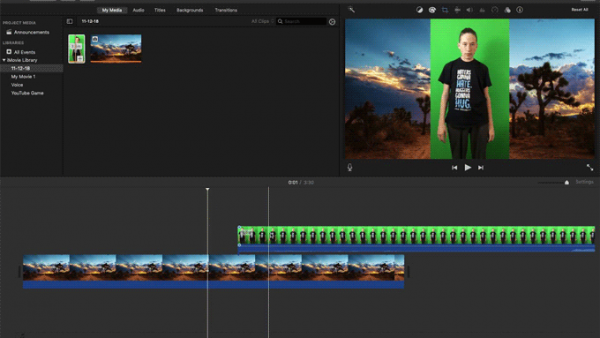
Next, we do some Basic color corrections like adjusting the white balance to set the time of the day and also adjusting the temperature and tint. Then we will create a new Adjustment layer by right-clicking on the layers panel and then adding a Color Correction effect, Lumetri Color. Now let us add a background for importing an image and adding it in the layers panel at the bottom. If you want to make your edges a little smoother, you can use the Screen Shrink/Grow option and the Screen Softness option. If this effect gives you some undesirable results, you can change the method to Ultra, giving you some additional settings to select the key color and another color adjustment. This effect will automatically detect whether you are using a green screen or a blue screen. Since we are getting a lot of green fringes due to color spills, let us turn on the Advanced Spill Suppressor, and it will remove it. Then check to Reduce Chatter, making sure that there is no visual noise on the edges or the subject. In the Key Cleaner effect, we can reduce the Additional Edge radius to 5.0 to make the subject a little sharper. Don’t set the view to the Final result as you might see artifacts as that view does not work well with Key Cleaner.

Inside the Screen Matte dropdown, Clip Black and Clip White can adjust those in such a way that the dark part is completely black, which removes the grey area, and the white part is completely white, which also removes the grey area.Ĭhange the view back to the Intermediate result. This will clearly show the areas which are hidden in black and visible in white. So, we have to adjust the parameters of the keylight effect.įirst, we will set the view to Screen Matte. When we zoom in, we can still see green on the fringes. You can toggle the transparency grid to see the transparent area. Press Ctrl to sample a greater area which also increases the size of the color picker.

We can see that near the Screen Colour property in the Keylight effect, there is a color picker, so use it to pick the green color. This will give us all three different effects simultaneously. Search key in the effects and preset panel, and you will find Keylight + Key Cleaner + Advanced Spill Suppressor. Finally, at the bottom, there are layers and a timeline panel used to add media and add animation keyframes.ĭouble-click on the Project panel to import the footage with a green background.ĭrag the footage in the layers panel to create a comp and then go to Window -> Effects and Preset At the right, there are various sections used to edit the video. We can even create our own custom layout. At the top right, we have various layout presets, which will arrange according to the type of work. Then there is the composition panel which shows the preview of the animation or video. On the left side, a project panel consists of the project files and an effects control panel, which shows the effects applied on a particular layer. Next, just below it, we have a tool panel and their properties.

At the top is the menu bar like File, Edit, etc., and each has its own submenu. Let us first familiarize ourselves with the interface before starting to get a better understanding. 3D animation, modelling, simulation, game development & others Steps to After Effects Green Screenĭifferent steps are mentioned below: Step #1


 0 kommentar(er)
0 kommentar(er)
